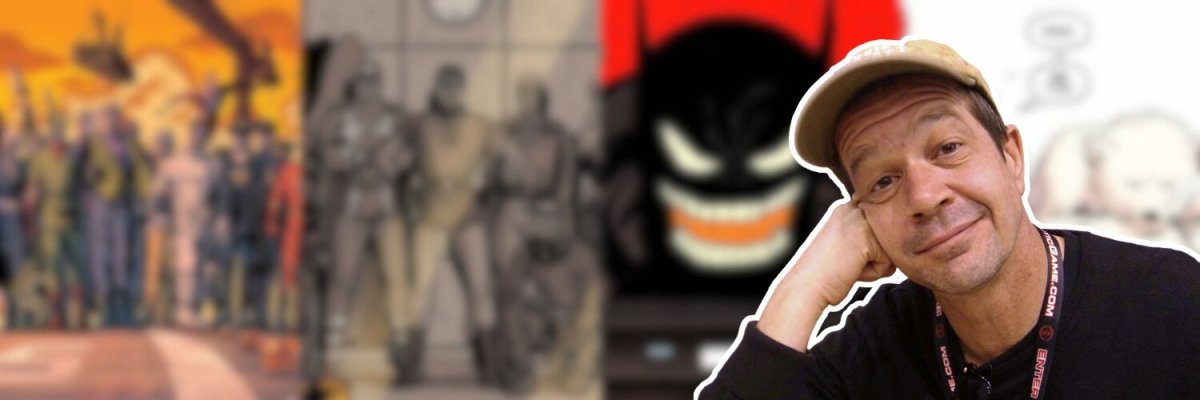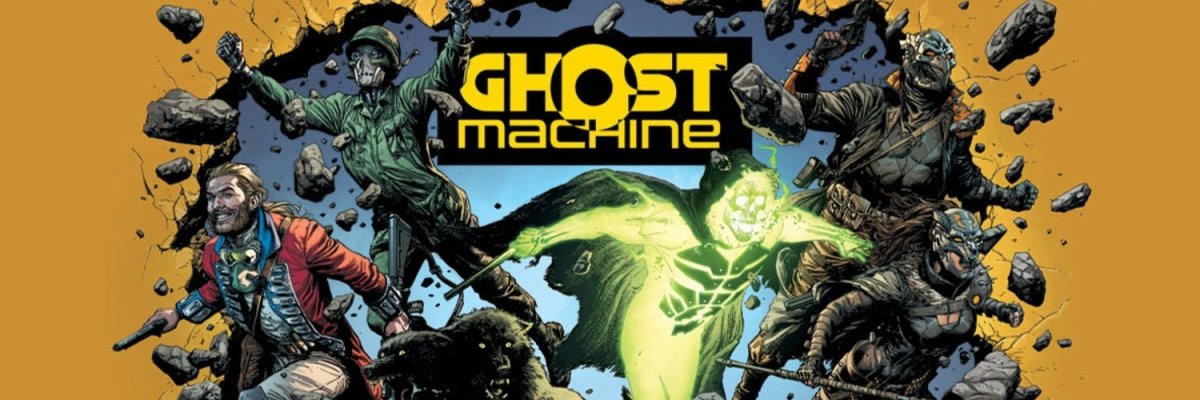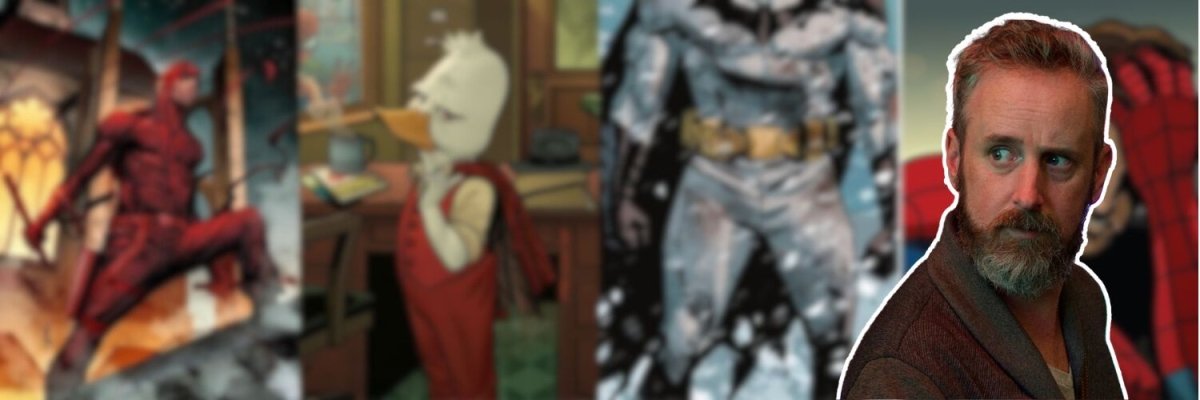
Written by Matheus
Filmmaker by day, Wishlistmaker by night. Kamala Khan’s unofficial PR team since 2014.
As soon as that surprise explosion hit, the comic book industry changed forever. In 2008, Marvel Studios, lacking their most lucrative properties, hitched all their wagons to a little-known mainstream character: Iron Man. What followed was the birth of a dynasty that would break box office records and shape the film industry for over a decade. It's funny to think Iron Man wasn't the big deal in comics that he is today.
Well, although that’s the legend we all tell, Tony Stark wasn’t a nobody either. Sure, he wasn’t on Spider-Man or Wolverine levels of recognizability, but Iron Man had always been a key player in the Marvel Universe (just not that guy). He was the Avengers’ money man, the futurist, the flawed genius who drank too much and over-prepared for battles that hadn’t even started. He had depth, but he wasn’t the poster boy.
That said, Iron Man has had some of the most consistent solo runs in Marvel history. His series has always been a playground for writers wanting to tackle themes of addiction, war, guilt, tech, and the weight of responsibility.
So no, Iron Man wasn't the MCU's rescue project. He was their blueprint.
Let’s take a look at some of the best recommendations to pick up right now:
Iron Man by David Michelinie (aka. Demon in a Bottle and Armor Wars)

First, let’s talk about the classics, the foundational stories that defined who Iron Man is on the page. Not having the highest-selling book on the shelves came with one big advantage: creative freedom. While characters like Peter Parker thrived on being the everyday underdog you could see yourself in, Tony Stark was harder to pin down. He wasn’t broke or scrappy. He was a billionaire weapons manufacturer in a red-and-gold suit. That’s not exactly the most relatable archetype.
But that’s where the beauty of Iron Man lies: he’s just a man in a can. No spider-sense, no healing factor, no alien heritage. Just his brains, in constant battle with a long list of personal demons. What made Tony Stark stand out, and still does, is that his greatest battles were never just against supervillains. They were against himself.
Take Demon in a Bottle, for example. What starts as a fairly straightforward superhero caper by David Michelinie and Bob Layton takes a sharp turn. The suit malfunctions. The board turns on him. Friends walk away. And slowly, steadily, the drinking creeps in. It's not a dramatic soap-opera reveal, but a quiet, constant background thing, until it’s not. Until it crashes everything down. That’s addiction to a tee. It lurks until it consumes your whole life, and you’re too far gone to do anything about it.
But here's the thing: it's never too late.
This isn’t just a "hero overcomes adversity" arc. Tony doesn't punch his way out of this one. He asks for help. He accepts that he’s broken. And Michelinie, to his credit, doesn’t wallow in the tragedy. He gives us hope, but not a false promise that everything is forever fixed. Demon in a Bottle is still powerful today because it showed a hero fall, and one get back up, in a way that felt real. It casts a shadow that will haunt Tony Stark for the rest of his life. And those shadows are exactly what make fiction touch something real.
Another one of those shadows is dealt with in Armor Wars, originally called Stark Wars, where Tony realizes his tech has been stolen and turned into weapons used to kill. And Tony Stark, once again, breaks the mold by feeling it in his gut. It would have been normal, especially back then, for a superhero to beat the villain of the week, crack a joke, and move on like nothing happened. But not Tony. He’s always aware of the fallout and carries the weight of what his hands created.
This positions Armor Wars as a character study on the guilt of a man realizing that the tools he built to protect are now being used to hurt, and doing everything he can to make it right. Even if it means burning bridges, ruining friendships, and stepping outside the law.
By questioning the militaristic obsession of comic books (especially in a comic that is often steeped in military environments) and turning it on its head, Michelinie finds a sweet spot in addressing real-world issues without ever forgetting that this is a different universe with a mission to tell a story. It’s almost a political stance (though that might be stretching it), but it’s definitely a very clever character piece.
The first Stark Wars and its sequels will be collected in a single volume, the Iron Man: Armor Wars Omnibus, later this year. But to be honest, there's almost no connection between them, except maybe the initial premise. Still, it's fun to see what other authors do with the same yearning.
Iron Man: Extremis by Warren Ellis and Adi Granov
 Let’s talk Extremis.
Let’s talk Extremis.
By 2005, Iron Man was in a weird place. He’d never really been the flagship character, but he was recognizable enough. The problem was, his comics didn’t feel modern anymore. They were stuck in a strange limbo between tech fantasy and superhero soap opera, and something had to change. Then came Extremis by Warren Ellis. It takes everything about Iron Man, strips it down to wires and bone, and rebuilds him into something terrifyingly sleek and new. The lengthy dialogues of the 20th century give way to cinematic panels and visual storytelling. It starts, as these stories often do, with a body on the floor and something very wrong. Extremis is a next-gen bio-serum (think nanotech on steroids), and when it falls into the wrong hands, the results are monstrous. But once again, the strength of the story comes from Tony, as a character definition, thinking outside the box. He turns his body into a machine. And that’s the heart of it: Tony literally merges with the suit. The armor becomes part of his biology.
The move is genius because it transforms an implied parable of the character into a sci-fi visual concept that readers can grasp. Ellis uses this moment to ask what it means for a man already wrapped in control, guilt, and ego to become his own invention. It's a juxtaposition of all his struggles (much like the alcoholism and guilt) into a sellable, action-forward exterior. Granov’s art is surgical. Clean, cold, and hyper-modern. You can almost hear the metal hiss. His redesigns ended up being the blueprint for the MCU Iron Man. If you love how Tony’s tech looks in the movies, that started here.
We need to wait a little bit for it to be reprinted, but it should be available soon as the first volume in the Modern Era Epic Collection line.
Civil War and Director of S.H.I.E.L.D Era

And then comes the famous Mark Millar–penned event Civil War. A group of teenage superheroes causes massive civilian casualties, and the Marvel Universe is divided over whether heroes should register their secret identities. Tony becomes the leader and public face of this new law, while Steve (as he does) fights for his view of freedom.
And I'm one of those who think Iron Man is obviously in the wrong. And here's the thing: both the comic and the character are aware of that, in a way. Remember, Tony’s story is always about guilt, but also about accountability - both for his drinking and the use of his tech for war.
A lot of people will disagree and say the decision is out of character for him, but I think it’s the opposite. The thing Tony doesn’t realize until it’s too late, though, is that this moral mission can also become an addiction. In a way, he reverts back to the guy who fires Jarvis in Demon in a Bottle. He ends up basically alone, and the ones paying for his mistakes are people to whom he didn’t extend the courtesy of choice. His moral stance is used as a weapon.
And even when he realizes that, he continues his journey of accountability. Mostly, it's in the side material of Civil War where this perspective truly shines - almost as if the authors are finding ways to justify some of the edgy, sellable choices Millar makes in the main event.
But isn’t that a brain trust of people adding to each other, the way comics were always made anyway?
Some of the accountability comes through Tony taking on more power in the aftermath of the event. He becomes the director of S.H.I.E.L.D. in his main title. This is a fun era because it uses a very Tony Stark way of appeasing unsatisfied readers. Well, isn’t this whole character about making mistakes and trying to fix them? Tony really does always try. So of course he would become the main decision-maker.
The shadow of the war and the toll it took create a Stark who is assertive but constantly questioning himself internally. It’s a constant fight against his demons, even as he helps organize the world he played a part in breaking; very much akin to Stark/Armor Wars.
You can find Civil War in trade paperback, hardcover and the newly launched small digest-size Marvel Premier Collection. Director of S.H.I.E.L.D. will be the future second and third volumes in the Modern Era Epic Collection line.
Iron Man by Matt Fraction and Salvador Larroca

If Extremis is the beginning of the cinematic Iron Man, then this is the golden age. Matt Fraction transforms the franchise into the blockbuster it would eventually become in the MCU. He takes the right lessons from Extremis and Civil War, but reforms them into something that resembles the classic Iron Man comics with modern flair. It’s my absolute favorite run.
Action is absolutely at the core here. It’s never boring; it grabs you from page one and never lets go. Fraction challenges our protagonist at every turn (and a challenged Stark is very much a good Stark). For the first time in a long while, it also feels like an Iron Man title that’s allowed to breathe, to build on itself over time. It has narrative patience, which gives it emotional payoff.
There’s a subtle but important distinction in this era: character progression through adversity, rather than the radicalization of Tony’s worst impulses (as we saw in the previous era). It brings a breath of fresh air. Stark is still haunted, still struggling, but now there's a sense that he’s growing, not just reacting.
Salvador Larroca’s artwork during this run is practically the visual definition of early-2000s Marvel. His work here is a star-making turn: clean, cinematic, and kinetic. It’s the perfect modern look, and as alive on the page as the movies are on screen.
Fraction also chooses to push the story forward by introducing Ezekiel Stane, a prodigy genius bent on revenge against Tony Stark. The character is a sharp read on the rising frenzy around young tech CEOs and startup culture - something all of our lives would eventually be consumed by. He doesn’t even wear a suit, but that doesn’t make him any less dangerous. (Yeah, I’m implying suits are evil.)
This is also the run where Pepper becomes Rescue (as we briefly saw in the MCU). It’s a smart, emotionally earned evolution for her character, and a clear precursor to what Jason Aaron would later do with Jane Foster in Thor. It’s honestly a stupid shame Marvel dropped it (as we also saw in the MCU). They had something really powerful there, and they let it fade.
It's not strange, though. It was the first run selected to start the Modern Era Epic Collection line that I've been promising you this whole article.
- Iron Man Modern Era Epic Collection Vol. 3: World's Most Wanted TP (It's volume 03 on the line, but first volume of the Fraction run, so you can jump-in here)
- Iron Man Modern Era Epic Collection Vol. 4: Stark Disassembled TP
- Iron Man Modern Era Epic Collection Vol. 5: The New Iron Age
Invincible Iron Man by Brian Michael Bendis and Mike Deodato Jr. (aka Ironheart and Doom)

As with most of late-era Bendis, this run is very controversial and not widely appreciated by fans. But I still hold the same opinion I had during his X-Men stint: it’s good. Throwing things against the wall is, to me, what comics should do. They should take risks, break molds, and test ideas - especially since, unlike film, mistakes in comics don’t cost hundreds of millions of dollars.
Here, Bendis takes the central character off the stage to see if everything else in the title still holds up. That’s not an unprecedented move, as DC did it repeatedly in the ’90s and early 2000s, often to great effect. It’s about expanding the legacy, elevating the supporting cast, and asking whether the myth can survive without the man.
And out of that experiment, we get Ironheart. Riri Williams is famously created during this period, and I won’t even get started on the disproportionate hate this girl receives, especially compared to how characters like Kyle Rayner or Connor Hawke were treated in their early days. (And let’s drop the bullshit, we all know why that is.)
Riri is a legacy character done right. She’s self-assured in all the right and wrong ways (much like Tony), and she’s hell-bent on bringing her vision of the world to the forefront (also very much like Tony). The fact that she’s written to be stubborn, sometimes to a fault, only strengthens the parallel. (Do I really need to say “much like Tony” again?)
But what isn’t like Tony is how she responds to all of this. Her generation sees the same impulses - toward tech, war, and progress - but processes them through a different lens. That’s exactly what legacy characters are supposed to do: reflect the core values of their predecessors while reshaping them through the demands of a new era.
And when Tony eventually returns, the tension between their overlapping but distinct worldviews is what makes the whole story spin. That friction is the narrative engine, not just a gimmick.
On the other side of this bold move, Riri isn’t even the only one keeping Stark’s legacy alive. In an even more provocative twist, a reformed Doctor Doom assumes the title of the Infamous Iron Man. And once again, Bendis nails the deeper question: why is Tony Stark acceptable as a former arms dealer seeking redemption, while Victor Von Doom is not? Is redemption about intentions or outcomes? Does sincerity matter more than collateral damage?
It’s a bold, messy, and thematically rich era. And even if not every beat lands, the ambition alone makes it worth paying attention to.
(Gotta believe all of this and Infamous Iron Man will get an omnibus at some point, right? If only every fan was on this train of giving things a shot with me.)
Iron Man: From Slott to Swords
Well, Tony has been thrown around from author to author with mixed results. First, we had Dan Slott’s run, which brought back the whole Iron Man 2020 concept, complete with a synthesized version of Tony and the return of Arno Stark. It made sense, considering it was the year 2020 in real life. If you dig Slott like I do, you’ll probably find this run a lot of fun. It’s structured almost like a TV show, with high-concept ideas, returning continuity threads, and the kind of big, bold swings Slott is known for.
Then came Christopher Cantwell’s very underrated run. It felt like Tony was finally back as a character grounded in the wider Marvel Universe again, facing off against Korvac (yes, that Korvac) and forming a surprisingly compelling relationship with Hellcat. As with most of Cantwell’s work, it flew under the radar, but it’s layered, thoughtful, and a fresh take on a character that can often get lost in tech jargon or brooding guilt. He’s a deeply talented writer with a genuinely unique perspective.
After that, Gerry Duggan brought Tony into the Fall of X era, just in time for him to lose his company (again). This run features the headline-grabbing wedding to Emma Frost, and while that might sound like a stunt on paper, the real highlight is the banter between them. Their dynamic feels like such an obvious pairing in retrospect that it's kind of wild it hadn’t been explored more before.
Finally, the latest series is being written by Spencer Ackerman, and it’s already looking promising. Riri Williams is back in the mix, and Tony seems to be retreating back to his own corner of the Marvel Universe, but with a twist. It's still early days, but Iron Man with a mecha sword? Yeah, I’m absolutely buying the first trade.

C'MON!!! MECHA SWORD!!! (honestly, maybe Iron man should be more like Power Rangers?)


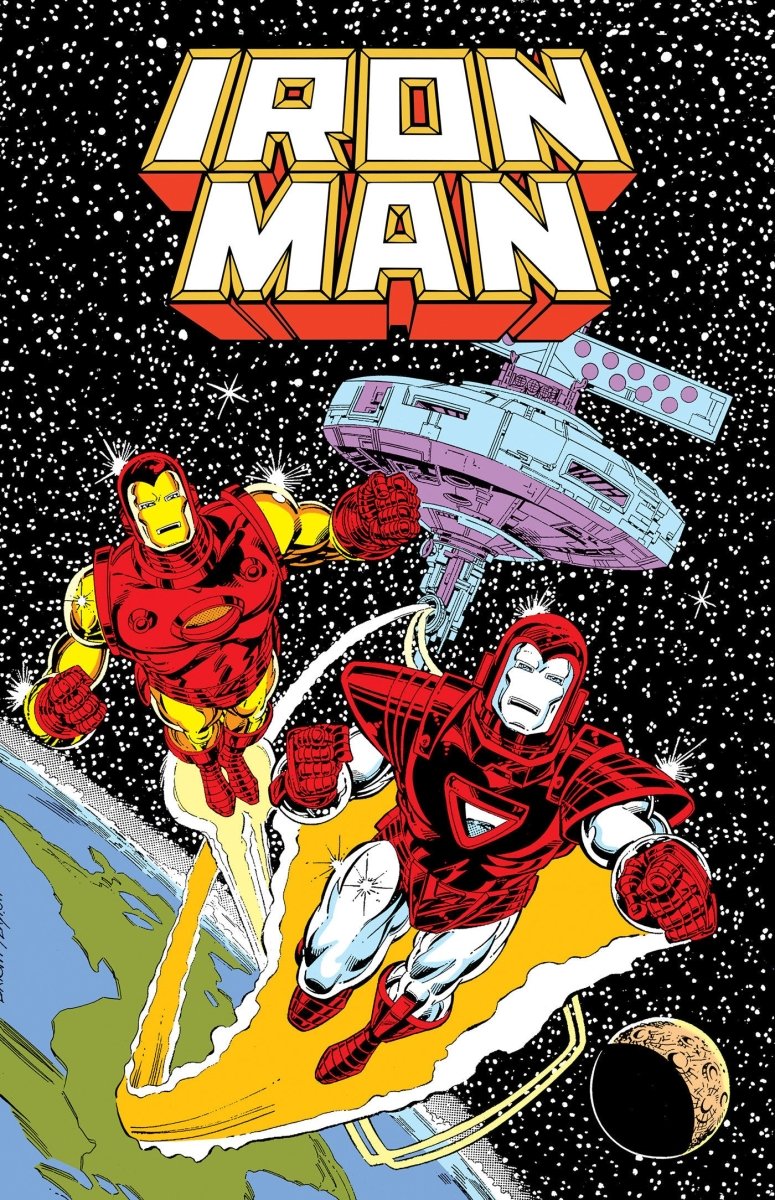
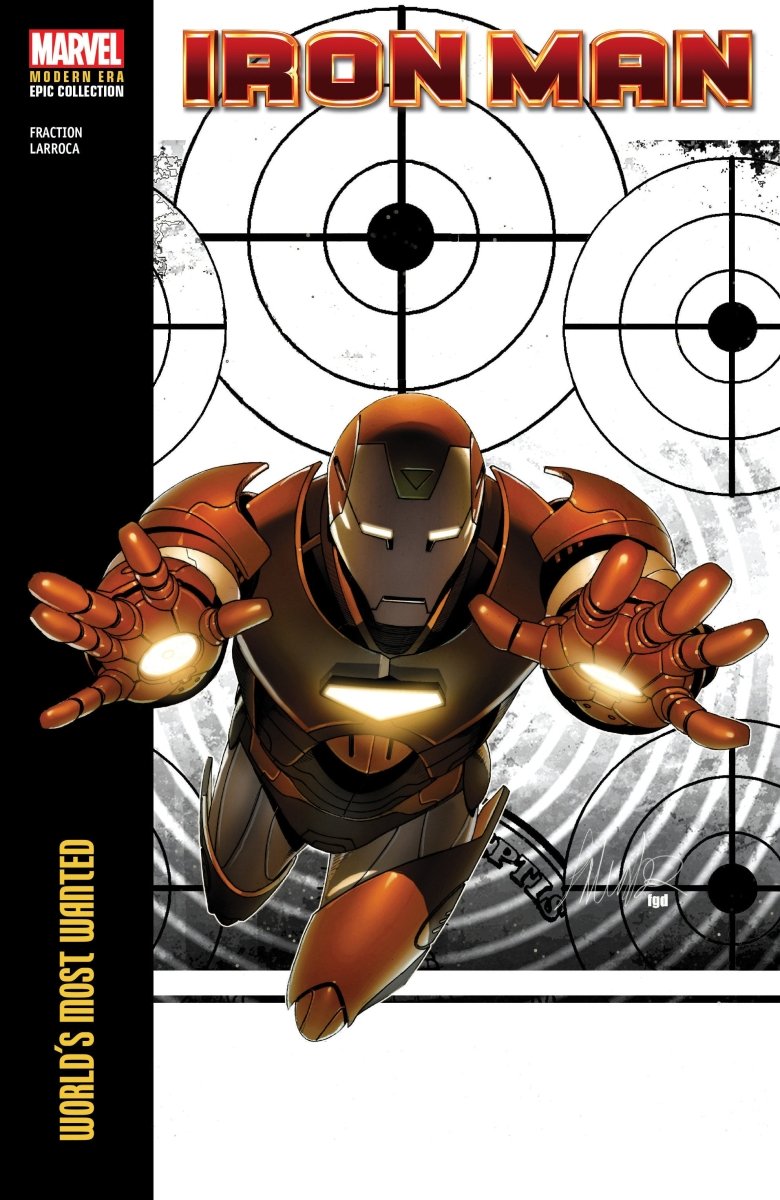
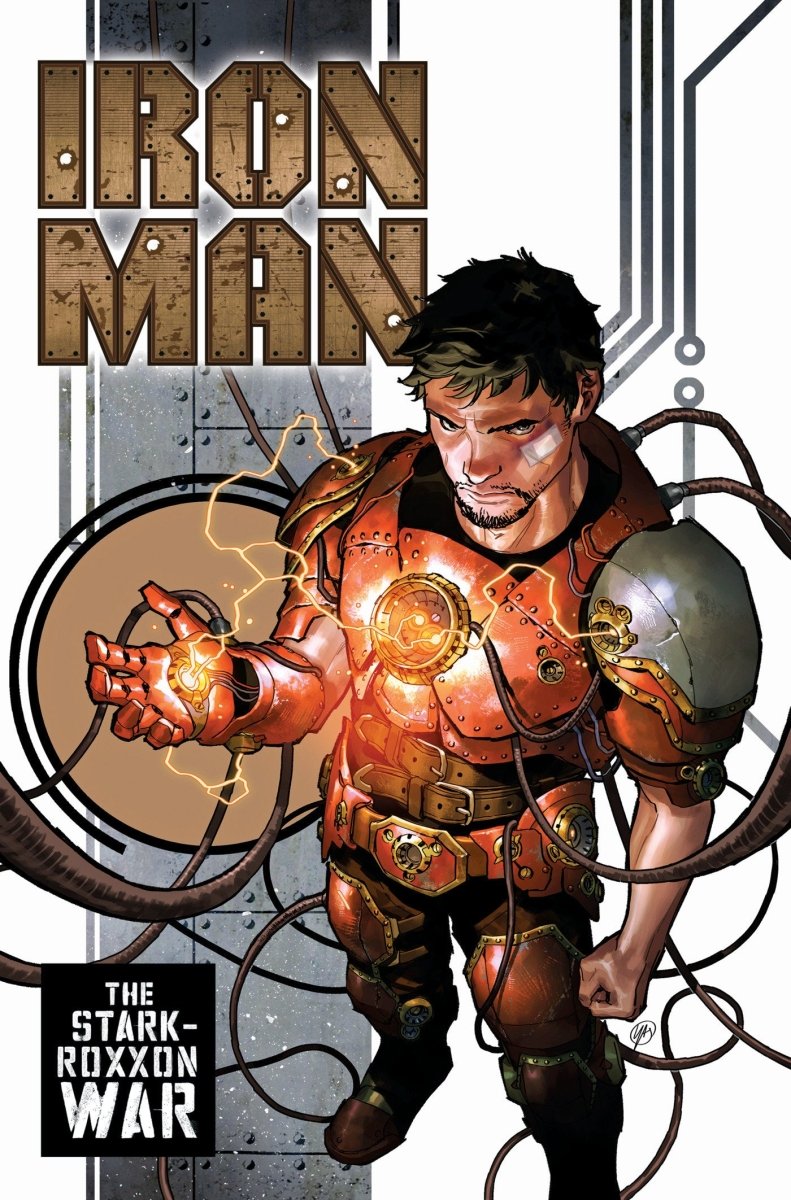
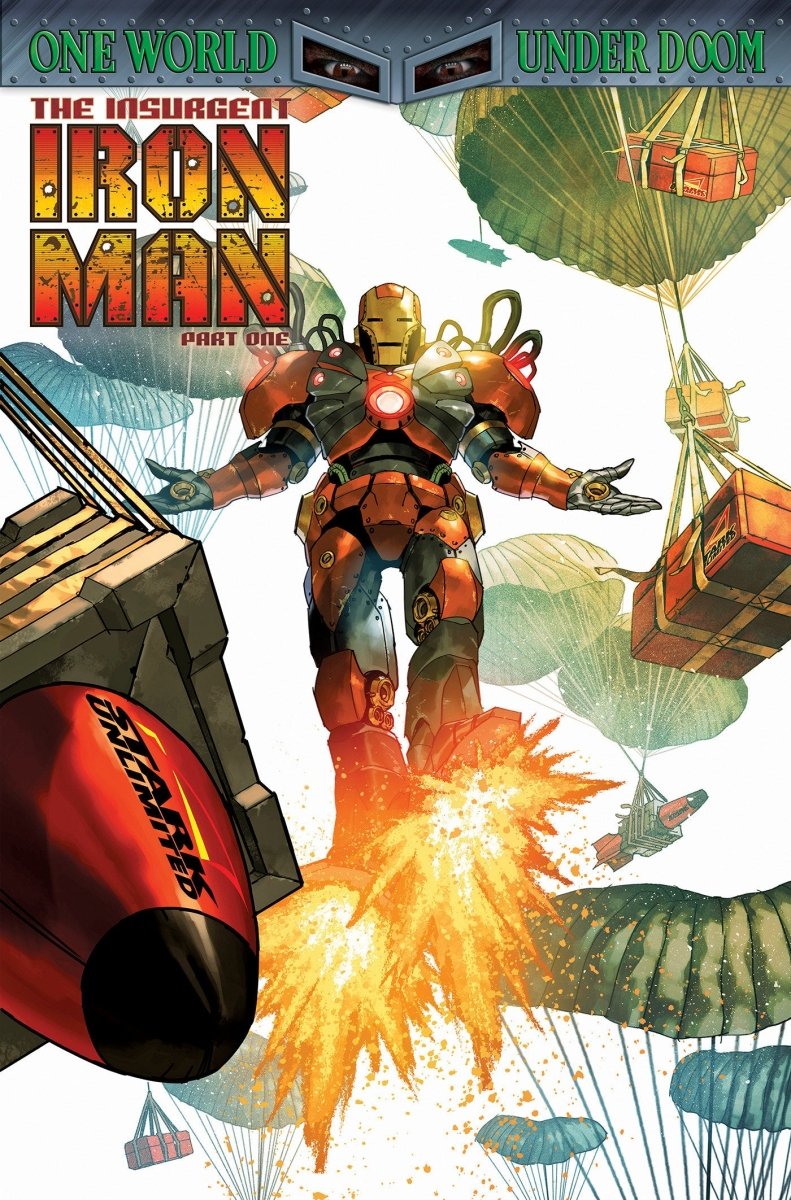
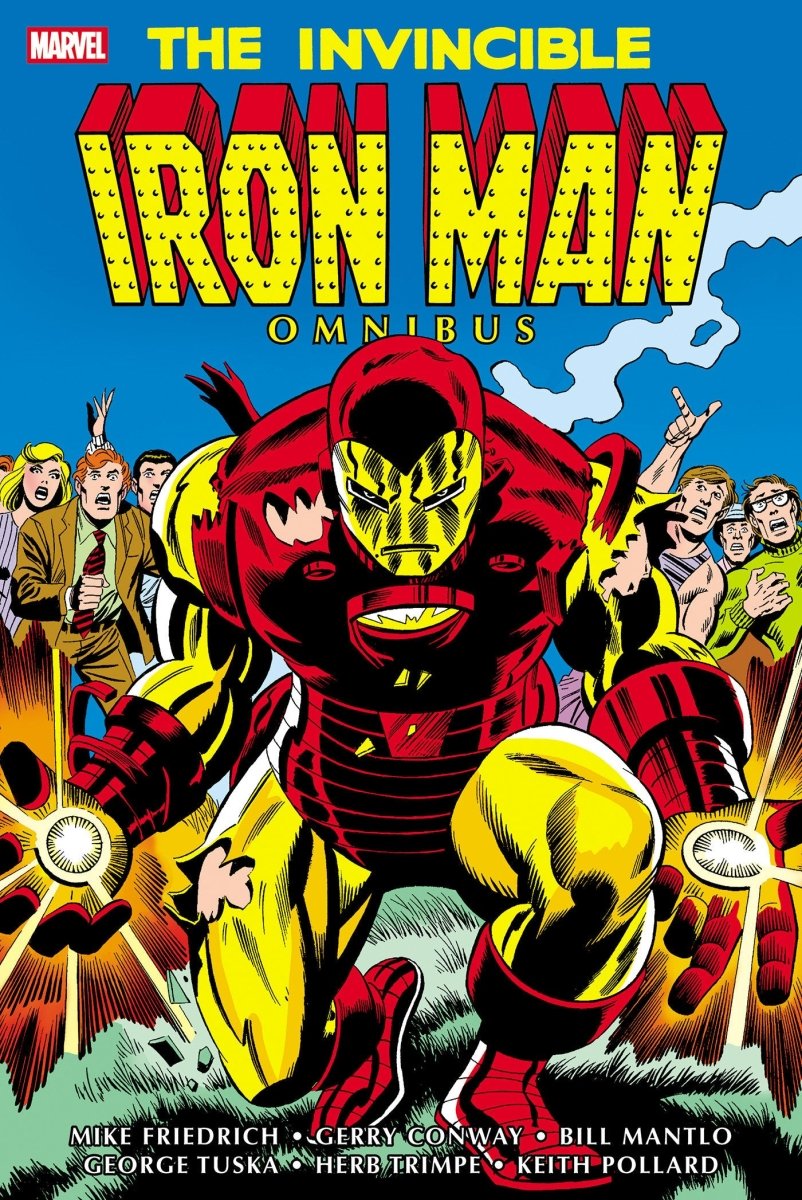
![The Invincible Iron Man Omnibus Vol. 4 Jack Kirby Cover HC [DM Only] *PRE - ORDER* - Walt's Comic Shop](http://waltscomicshop.com/cdn/shop/files/the-invincible-iron-man-omnibus-vol-4-jack-kirby-cover-hc-dm-only-pre-order-3733328.jpg?v=1761321882&width=785)
![Iron Man: Demon In A Bottle [New Printing 2] TP *PRE - ORDER* - Walt's Comic Shop](http://waltscomicshop.com/cdn/shop/files/iron-man-demon-in-a-bottle-new-printing-2-tp-pre-order-812147.jpg?v=1746277653&width=762)
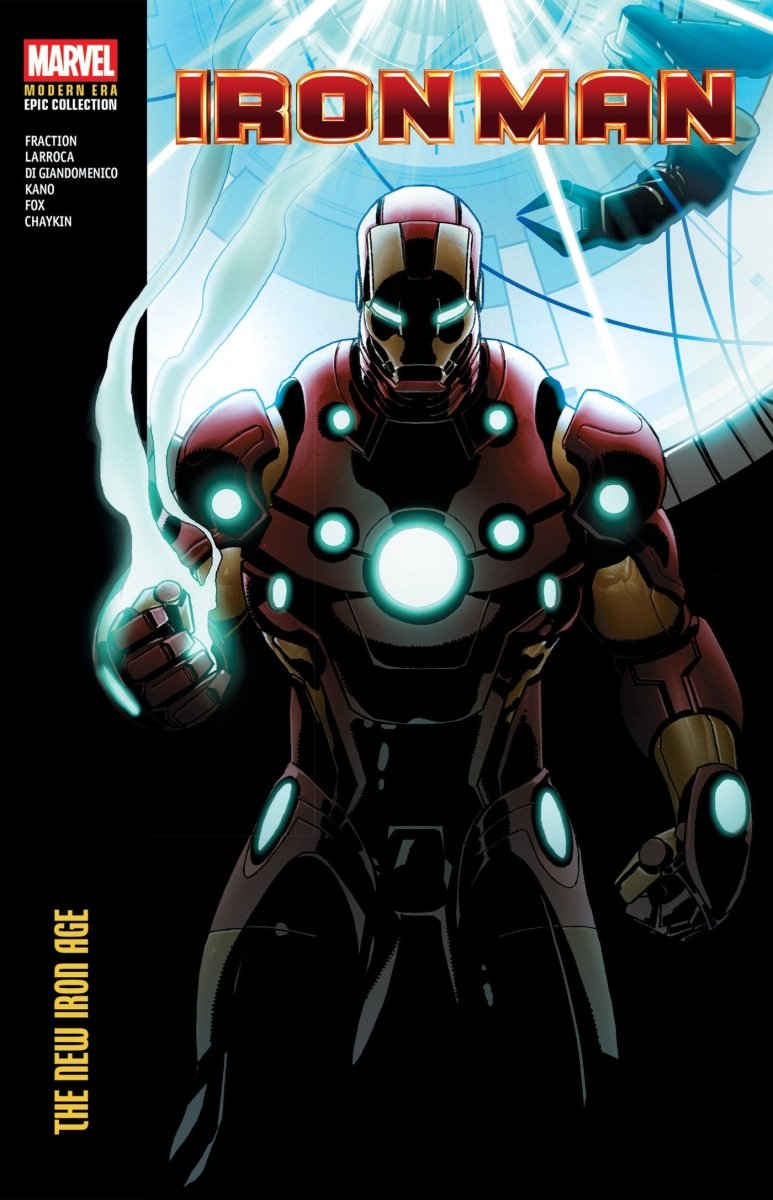
![Iron Man: Armor Wars Omnibus John Romita Jr. Cover [DM Only] HC *PRE - ORDER* - Walt's Comic Shop](http://waltscomicshop.com/cdn/shop/files/iron-man-armor-wars-omnibus-john-romita-jr-cover-dm-only-hc-pre-order-999899.jpg?v=1750849183&width=779)
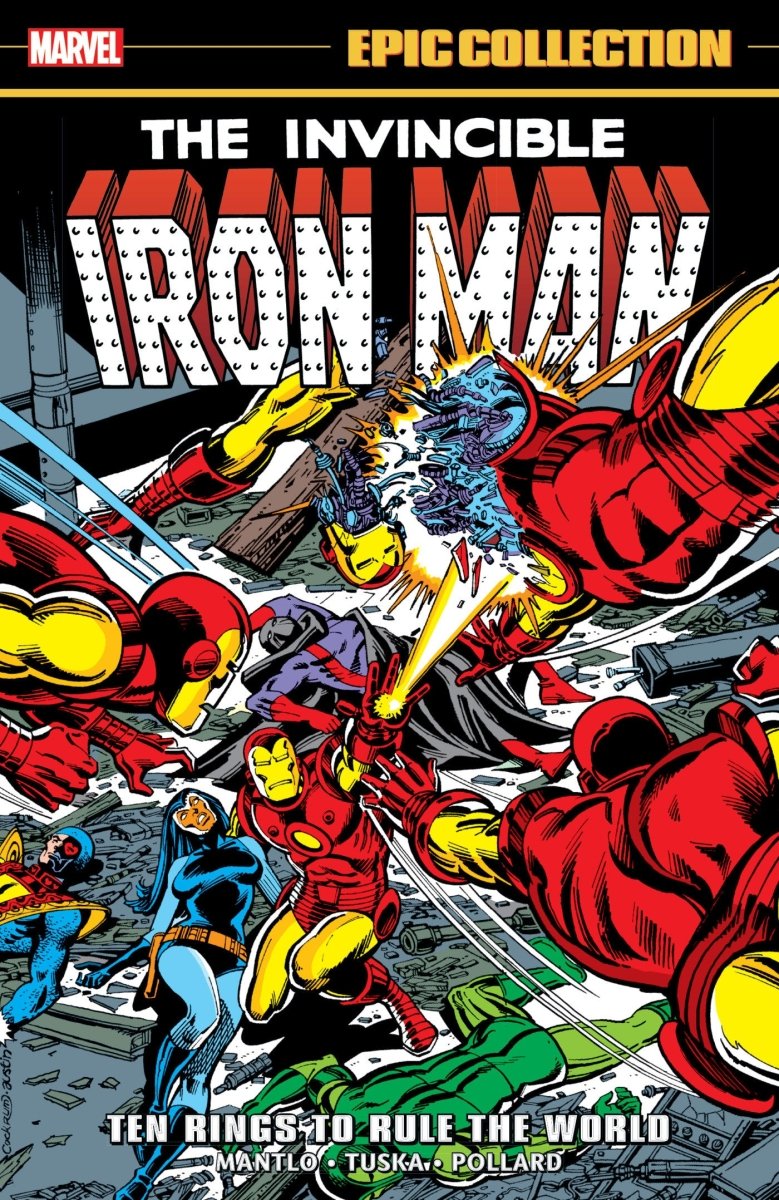
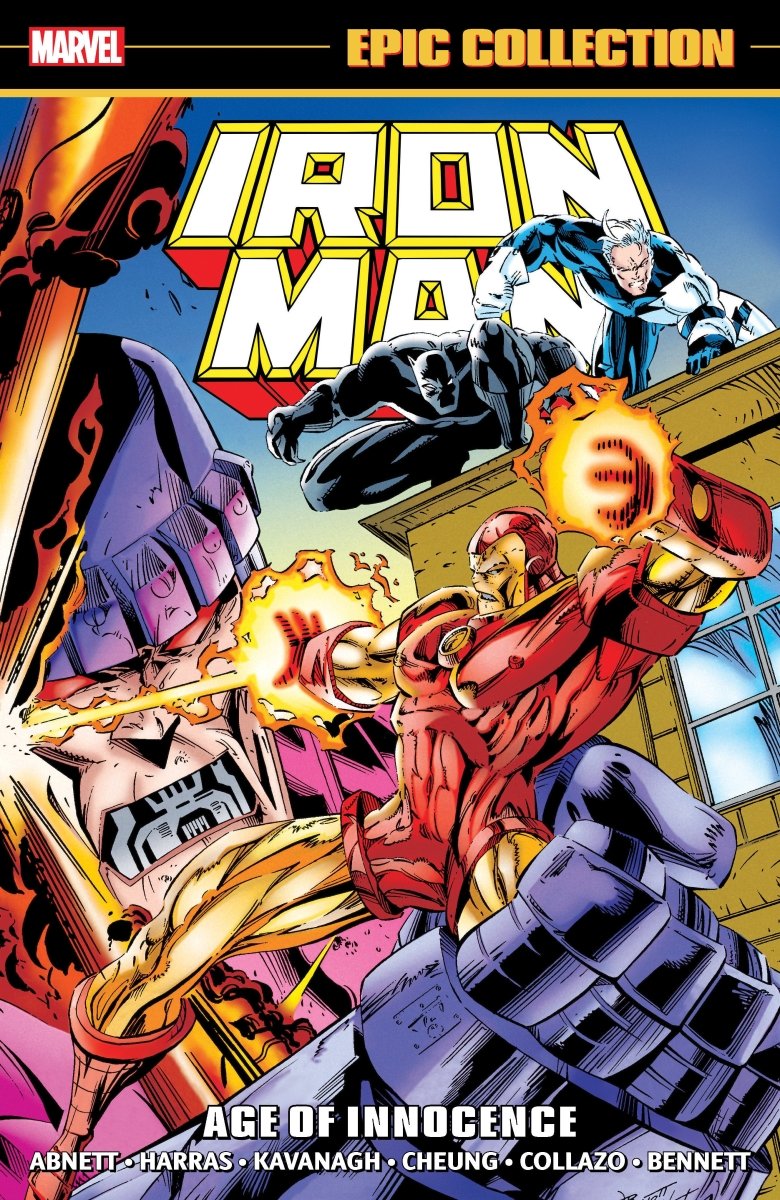
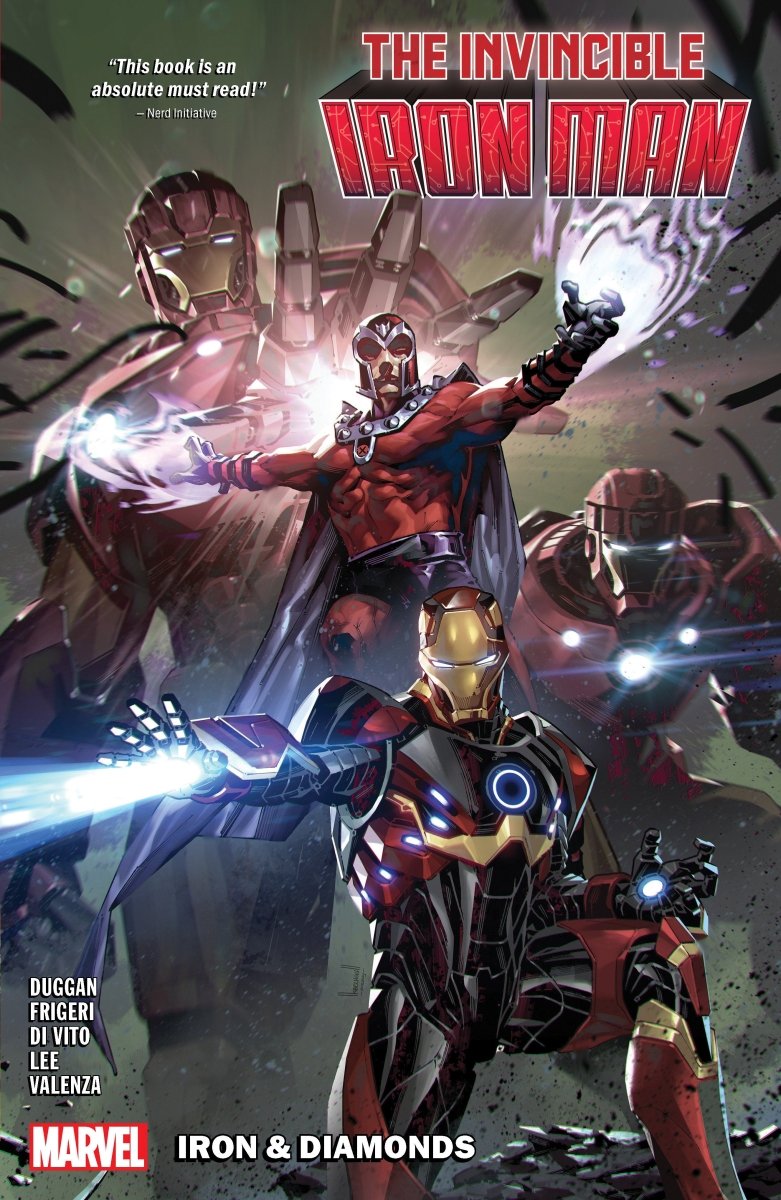
![Iron Man Epic Collection: Stark Wars [New Printing] TP *PRE - ORDER* - Walt's Comic Shop](http://waltscomicshop.com/cdn/shop/files/iron-man-epic-collection-stark-wars-new-printing-tp-pre-order-463571.jpg?v=1727886939&width=773)
